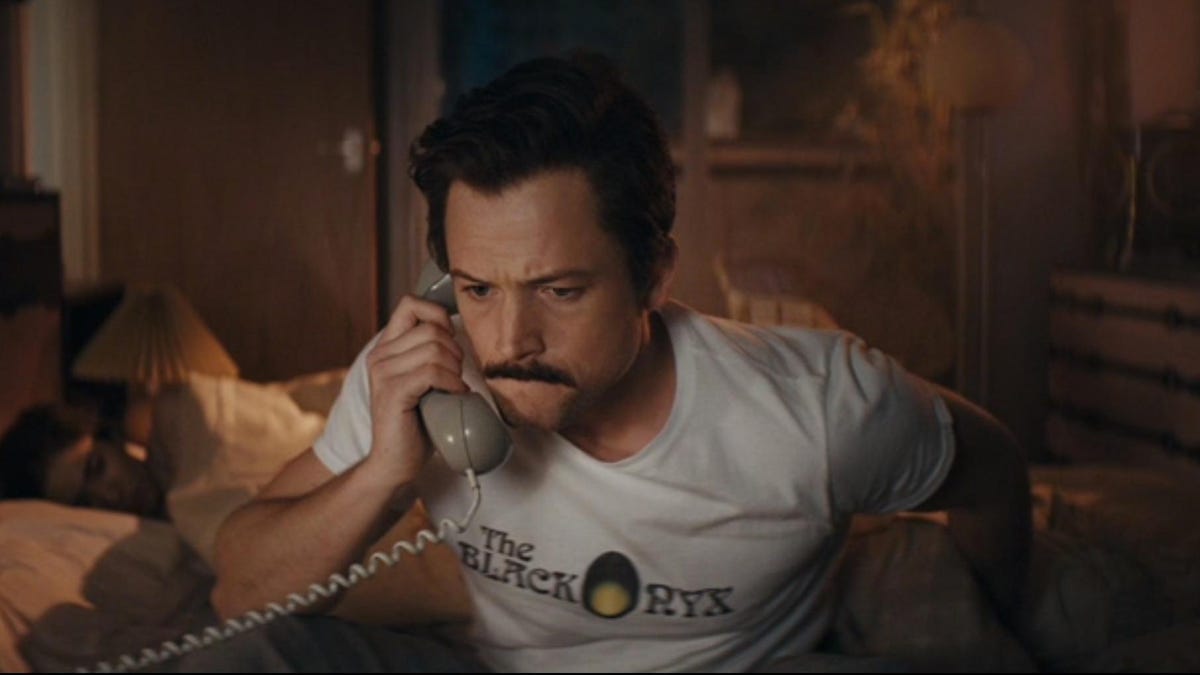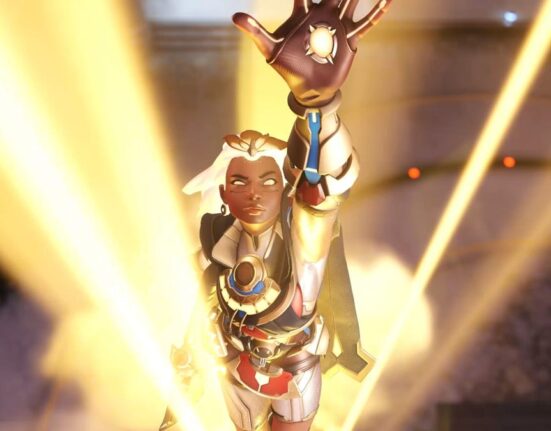According to its description on Apple TV, the new film Tetris is the story of “American video game salesman Henk Rogers (Taron Egerton) and his discovery of Tetris in 1988.” Now, I’m no Tetris historian, so I don’t know quite where the true story of the hard-fought negotiations for the rights to publish the world-famous puzzle game ends and the movie’s efforts to drum up suspense with espionage-movie thrills begin.
But I do know one thing about the real Henk Rogers that the film, understandably, does not tell us: He was much more than just a “video game salesman.” At his company, Bullet-Proof Software, he led development on a role-playing game that played a crucial role in the popularization of computer RPGs in Japan, without which the advent of JRPGs via series like Final Fantasy may have looked very different.
Read More: The Tetris Movie Fumbles What’s Actually An Incredible Story
The title The Black Onyx is never spoken in the film Tetris, but the filmmakers nonetheless find ways to acknowledge the existence of Rogers’ first big success. In an early scene at a Las Vegas trade show, for instance, you can briefly glimpse a sign that reads “The Black Onyx” in the booth where Rogers is exhibiting his games. More prominently, you can see Egerton’s Rogers wearing a t-shirt with the game’s stylized title on it multiple times in the film. But what is The Black Onyx, exactly?
Up to 69% off
Custom Lenovo Laptops or PCs
Pick your processor, RAM, GPU, and more
Whether you are in the market for a new laptop or desktop or if you a specifically looking to build something to game on, you can do so here and you’ll save up to 52% off.
The Black Onyx and the start of the JRPG era
Never released in the west, The Black Onyx is a 1984 computer role-playing game designed and programmed by Henk Rogers, who had grown up in the United States but was living in Japan at the time. Such a game may not immediately sound all that significant, because we tend to think of the Japanese gaming landscape as being replete with RPGs. But in 1984, that was definitely not the case.
Early computer RPGs like Wizardry, inspired by Dungeons & Dragons, didn’t initially get Japanese releases, and so when it came time to market The Black Onyx, Rogers ran into an ignorance problem. Japanese publishers weren’t already familiar with the concept of role-playing games, and early advertisements got a cold response. He had to do the work of showing potential customers the appeal. Speaking to Edge in 2008, Rogers said,
I rolled up my sleeves and started knocking on doors. I visited every computer game magazine in Japan, sat the editor down and created his character. I had a set of questions I’d ask them in Japanese: “What’s your name? Which one of these 50 heads looks the most like you? Please pick out some clothes to wear.” Then I’d tell them: “This is you. Now we are going to go on an adventure.” I would play with their character for an hour while they looked over my shoulder. That way they’d see how to map with graph paper and pencil, how to explore the world, and buy and equip armor and weapons.
Ultimately, Rogers’ hard work paid off, and the game became a huge hit. It’s probably historically inaccurate to call The Black Onyx the first computer role-playing game released in Japan, but it was certainly the first to achieve considerable success, and is cited as an influence by people behind other hugely important early Japanese RPGs like Hydlide and Dragon Quest. In that same 2008 Edge interview, Rogers says he often meets people in the Japanese games industry who were impacted by his RPG. “When I mention I used to have a publishing company in Japan, Bullet-Proof Software, they ask if I had anything to do with Black Onyx. I say I designed and developed it and a lot of the time they’ll exclaim: ‘Oh my god, you’re the reason I’m in this industry!’”
Even looking at it today, I’m impressed by the customization options and interface in The Black Onyx. Early in the video above, you can see the player choosing from some 50 pixelated little hairstyles, and then from outfits of different colors, before venturing onto their first-person quest. Even the bars representing health, now a commonplace feature in games of all kinds, were somewhat novel for the time.
I understand why the Tetris movie didn’t take any time to touch on The Black Onyx. That’s a whole story unto itself. But I think it’s worth keeping in mind, when watching the film, that Rogers’ impact on game history goes beyond his involvement in that monumental saga, and may have helped spark the development of early Japanese role-playing games, as well.







Leave feedback about this